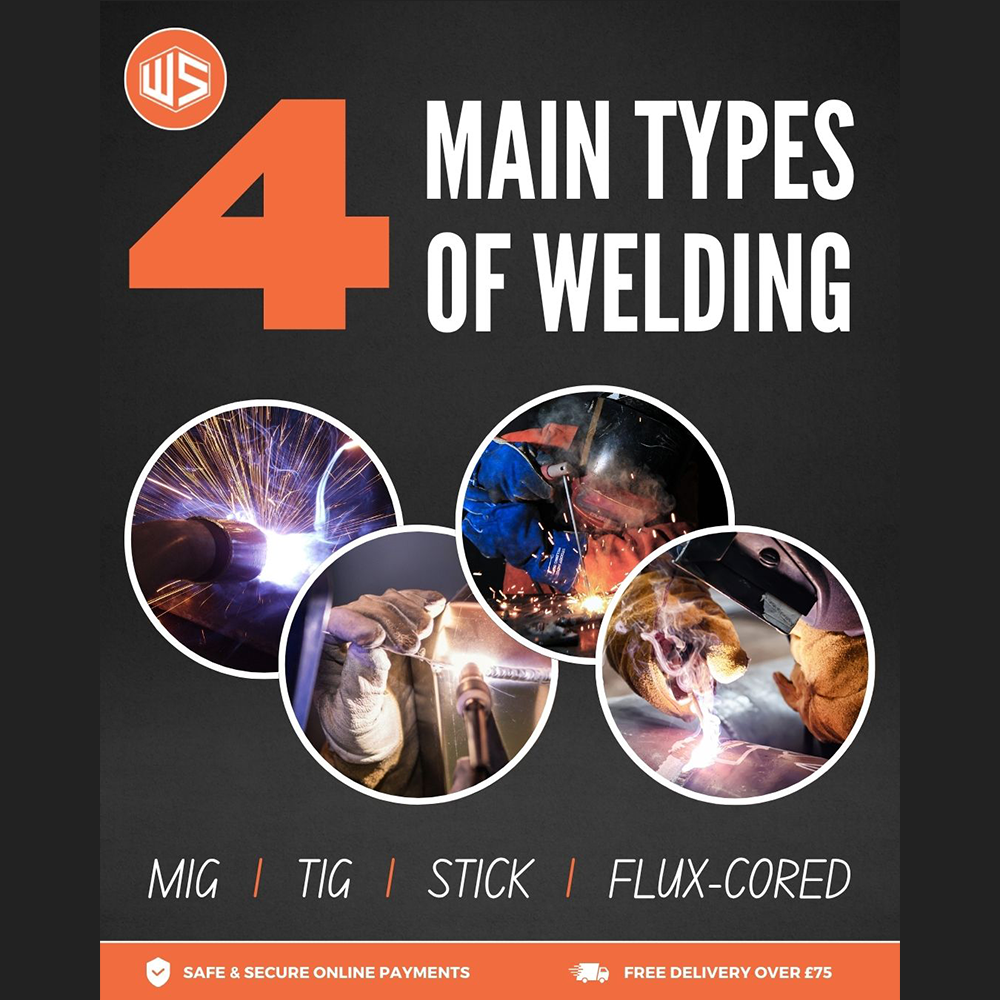The 4 Main Types of Welding Explained: MIG, TIG, Stick and Flux-Cored
May 19, 2025When it comes to welding, choosing the right process is essential for ensuring the strength, appearance, and efficiency of your weld. Whether you're just getting started in the industry or looking to expand your knowledge, understanding the differences between the main types of welding is crucial.

In this article, we’ll explore the four primary types of welding: MIG, TIG, Stick, and Flux-Cored. We’ll break down how each works, their pros and cons, and the best applications for each process.
MIG Welding (Gas Metal Arc Welding – GMAW)
How it works:
MIG welding uses a continuously fed wire electrode and shielding gas to create a weld pool. The wire melts and joins the base materials together.
Best for:
- Mild and stainless steel
- Aluminium
- Sheet metal and automotive work
Pros:
✅ Easy to learn
✅ High productivity
✅ Cleaner process compared to stick
Cons:
❌ Requires shielding gas
❌ Less effective outdoors due to wind
TIG Welding (Gas Tungsten Arc Welding – GTAW)
How it works:
TIG welding uses a non-consumable tungsten electrode and a separate filler rod. An inert gas (usually argon) protects the weld area from contamination.
Best for:
- Stainless steel
- Aluminium
- Thin metals and clean, cosmetic welds
Pros:
✅ Precise and clean welds
✅ No spatter
✅ Excellent control
Cons:
❌ Slower process
❌ Requires high skill level
❌ Not ideal for thicker materials
Stick Welding (Shielded Metal Arc Welding – SMAW)
How it works:
Stick welding uses a consumable electrode coated in flux. When melted, the flux creates a shielding gas to protect the weld from contaminants.
Best for:
- Outdoor work
- Construction and repair
- Rusty or dirty metals
Pros:
✅ Works well in harsh conditions
✅ Inexpensive equipment
✅ No need for external gas
Cons:
❌ More cleanup due to slag
❌ Harder to learn for beginners
❌ Less precise than MIG or TIG
Flux-Cored Arc Welding (FCAW)
How it works:
Flux-cored welding is similar to MIG, but the wire has a flux core. This creates its own shielding gas as it burns, allowing for outdoor use.
Best for:
- Structural work
- Thick materials
- Outdoor fabrication
Pros:
✅ Suitable for windy environments
✅ High deposition rate
✅ Ideal for thicker metals
Cons:
❌ Produces slag
❌ Can be messy without good technique
Each welding process has its own strengths and weaknesses. The right choice depends on your project, environment, material type, and skill level.
At Welding Superstore, we supply equipment for MIG, TIG, Stick, and Flux-Cored welding, along with expert advice to help you find the right tools for the job.
If you’re looking to learn more or upgrade your setup, get in touch with our team today.
OTHER ARTICLES
What Shade Do I Need for Different Welding Processes? (2025 Guide)
December 8, 2025
Christmas Gift Ideas for Welders: A Helpful Guide for Partners, Friends & Family
December 1, 2025
Mosa Magic Weld 200 YDE Diesel Welder Generator – Compact Power for Serious Mobile Welding
November 24, 2025
The Best Workshop Heaters for Winter - Stay Productive with SIP
November 17, 2025
Three GYS Galaxy 400T W Multi-Process Welders Sold to Customer
November 10, 2025
Save Up to 40% in Welding Superstore’s Autumn Sale!
November 3, 2025
A Best-Seller: Parweld Panther MIG Welding Gauntlets (P3825)
October 27, 2025
Keep Your Workshop Safe and Efficient with Regular Kemper Filter Changes
October 21, 2025
Keep Your Workshop Running Smoothly with Reliable Welding Consumables
October 14, 2025
Portable 400V Power Breakthrough: Instagrid LINK MAX
October 7, 2025

